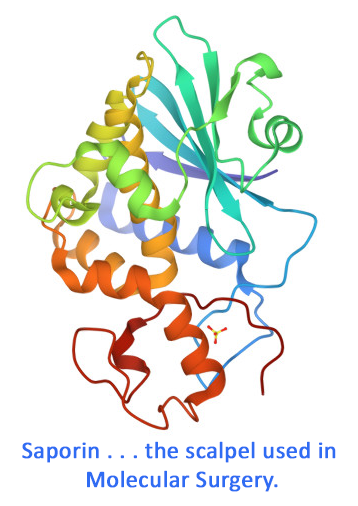CD11b is an alpha subunit of Mac-1, also known as CR3. CD11b is the receptor for the C3bi fragment of complement. This receptor is involved in bacterial phagocytosis. A reduction in neutrophil CD11b expression after severe traumatic injury correlates with increased septic complications. CD11b is a component of integrins, important for adhesion of neutrophils to surfaces. Mac-1-SAP recognizes the Mac-1 (CD11b) receptor in mouse and human. Mac-1-SAP is excellent for removing contaminating macrophages from primary cultures to determine their role(s) in autoimmune diseases and in degenerative diseases such as Alzheimer’s.
Mac-1-SAP is a chemical conjugate of the rat monoclonal antibody to CD11b (the receptor for C3bi) and the ribosome-inactivating protein, saporin. It eliminates Mac-1 positive (CD11b positive) cells in mouse and human.
Mac-1-SAP mouse/human is available individually (Cat. #IT-06) or as a kit (Cat. #KIT-06) which includes Mac-1-SAP and Rat IgG-SAP (Cat. #IT-17).
keywords: Mac-1, CD11b, C3bi receptor, microglia, macrophages, CR3, Anti-Mac-1, Anti-CD11b, Anti-CR3, saporin, targeted toxin, Alzheimer’s disease, brain, neuroscience, immune system, ablation, immunology, inflammatory, mouse, activation, phagocytosis, cytokines
Different immune cells mediate mechanical pain hypersensitivity in male and female mice.
Sorge R, Mapplebeck J, Rosen S, Beggs S, Taves S, Alexander J, Martin L, Austin J, Sotocinal S, Chen D, Yang M, Shi X, Huang H, Pillon N, Bilan P, Tu Y, Klip A, Ji R, Zhang J, Salter M, Mogil J (2015) Different immune cells mediate mechanical pain hypersensitivity in male and female mice. Nat Neurosci 18:1081-1083. doi: 10.1038/nn.4053
Summary: A large and rapidly increasing body of evidence indicates that microglia-to-neuron signaling is essential for chronic pain hypersensitivity. Using multiple approaches, the authors found that microglia are not required for mechanical pain hypersensitivity in female mice; female mice achieved similar levels of pain hypersensitivity using adaptive immune cells, likely T lymphocytes. This sexual dimorphism suggests that male mice cannot be used as proxies for females in pain research. Mac-1-SAP mouse/human toxin (Cat. #IT-06, 15 μg in 8.8 μl) and Saporin control (Cat. #PR-01, 8.8 μg in 8.8 μl) were administered via i.t. injection. The topic of immune system involvement in chronic pain pathophysiology is one of the most active in the pain field; that this sex difference has not been observed until now is very surprising indeed. An important implication of the current findings is that distinct strategies targeting neuroimmune signaling might be required for the treatment of chronic pain in men versus women.
Related Products: Mac-1-SAP mouse/human (Cat. #IT-06), Saporin (Cat. #PR-01)
Extracellular signal-regulated kinase-regulated microglia-neuron signaling by prostaglandin E2 contributes to pain after spinal cord injury.
Zhao P, Waxman SG, Hains BC (2007) Extracellular signal-regulated kinase-regulated microglia-neuron signaling by prostaglandin E2 contributes to pain after spinal cord injury. J Neurosci 27:2357-2368. doi: 10.1523/JNEUROSCI.0138-07.2007 PMID: 17329433
Summary: Spinal cord injury frequently leads to the development of long-term chronic pain. Recent data has shown that activated microglia are involved in the maintenance of this pain state. Following a spinal cord contusion injury rats were treated with a 36-µg injection of Mac-1-SAP (Cat. #IT-06) into the lumbar enlargement. Treated animals were found to have reduced microglial staining, reduction in prostaglandin E2 levels, and fewer pain-related behaviors.
Related Products: Mac-1-SAP mouse/human (Cat. #IT-06), Antibody to Mac-1 (Cat. #AB-N06)
browse all references for this product | back to top


Reviews
There are no reviews yet.